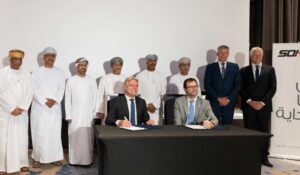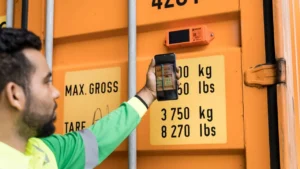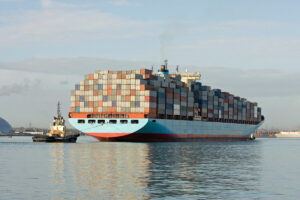Contribution from 1-Stop Connections
The ongoing challenge for the port community is how to optimise operations. That’s just one of the findings in new research by the terminal operating system provider, Navis.
In this post, we’ll look at the survey results and other evidence that shows the importance of a VBS to the smooth operation of the landside supply chain.
Results of the Navis survey
Optimisation to improve productivity was the biggest challenge for three quarters of the terminals surveyed by Navis.
When asked about other concerns, the top three responses were:
-
Optimisation – 76%
-
Cost reduction – 67%
-
Improving yard operations – 52%
Navis released the findings to show the return on investment that its customers achieved by selecting its N4 terminal system.
Navis customers experienced the following benefits with N4:
-
51% improved yard productivity by 25-49%
-
57% improved gate productivity by 25-49%
-
67% improved reporting quality by 25-49%
-
58% improved safety by 25-49%
-
59% improved IT staff productivity by 25-49%
Improvements in all of these can be achieved by implementing a digital platform such as the 1-Stop’s Vehicle Booking System (VBS).
The importance of a universal platform
As advances are made in data collection and AI-based processing, the barrier to improved efficiency is no longer CPU speed or hard drive size. The new problem is how to get the various digital platforms in a supply chain to talk to each other.
The aim is smoother communication between one business and another.
Last year, former IBM CEO Samuel J. Palmisano pointed out that digital platforms are a leading force for globalization.
“I’ve been working in technology for 40 years, and I’ve never seen anything move this fast,” he said.
According to Palmisano, companies achieving the largest scale today use an extensible platform ecosystem.
It’s not about how many assets they own, it’s about the universality of the platform they use.
The importance of the platform is echoed in a Harvard Business School working paper on platform transitions, whose authors emphasized the importance of platform-based businesses that “harness the innovative capabilities of complementors”.
“Even for organizations that may have previously entered into many supply or marketing partnerships, if they have not engaged extensively in product development alliances, which affect core operations, they may encounter significant challenges,” the authors said.
“Opening up interfaces and allowing others to contribute to their products, possibly affecting central product propositions, may be a very hard, and thus identity threatening, shift.”
The point about opening up interfaces and allowing collaboration is key to the future of supply chain systems. It hints at the importance of an easily assimilated VBS as the basis of a successful universal platform.
1-Stop Communications' CEO Michael Bouari spoke to Port Technology at TOC Europe 2017 to discuss how the company is aiming to improve supply chain technology:
Mobile technology, social media, cloud computing and advances in analytics are all contributing factors in digital transformations. Learn more from Michael Bouari, CEO, 1-Stop Connections, in his technical paper ‘Productivity Through Decision Making’
1-Stop’s VBS digital platform and the landside supply chain
The search for an Australia-wide solution for port optimisation continues.
In August 2017, Shipping Australia Limited (SAL) submitted to a national inquiry into supply chain strategy.
The organization, highlights the need for an integrated supply chain network that efficiently links container transport with intermodal and road freight sectors.
They recommend “redirecting infrastructure resources committed to networks parallel to the coastline to create hyper-efficient and resilient networks perpendicular to the coast”.
Earlier this year, the issue of platform interfaces was raised in Melbourne when the Victoria International Container Terminal (VICT) received the first ship at its new automated container terminal.
Container transport operators using the new system registered with VICT through 1-Stop’s digital platform to use the Vehicle Booking System (VBS).
Drivers also completed on-line MSIC inductions through 1-Stop before they could access the terminal.
Both registration and induction could be completed through 1-Stop’s digital platform because of its interconnected eco-system capacity to interface with other systems.
The landside supply chain problems that the Navis research identified – optimisation, cost reduction and improving yard operations – are solved by 1-Stop’s digital platform – 1-Stop VBS.
Key features of 1-Stop’s VBS include:
-
Timeslots that allow terminals to set maximum numbers for each of the 24 time zones.
-
Work calendars with multiple day types that can be set up in advance.
-
180 + configurable business rules, across multiple categories such as booking and manifesting, stack run-in and run-out, billing/invoicing.
-
Integrated booking and manifesting so that carriers know exactly when to arrive at the terminal.
-
User-defined billing processes that integrate with your financial systems.
-
Real-time messaging via multiple channels including message board email, browser pop-up and mobile device application.
-
Enriching the TOS with eco-system data for better control, management and optimisation of external constraints
Learn more about 1-Stop Connections’ Preferred Partner solutions in PTI's Supplier Directory
Ports: Gateways, not destinations
Ports are gateways, not destinations.
This means freight must keep moving through the port to the end destination.
When 1-Stop’s digital platform was introduced into the Ports of Auckland (POAL), truck turnaround times were reduced within a week.
With fewer spontaneous truck arrivals, queues were shortened from day one.
That’s because the 1-Stop VBS requires trucks to book slots in advance for picking up and dropping off containers, which improves traffic predictability.
On heavy vessel days, the carriers can plan how many trucks they will need and when. In addition to improving transport and communication synergy across POAL, the VBS has also streamlined off-peak truck travel times, reducing traffic excess noise and congestion around the port.
Improving the flow of containers through the landside of the supply chain requires a platform with universal applicability – a platform of platforms.
1-Stop’s VBS has shown in terminals both in Australia and overseas that it can meet the ongoing challenges of supply chain optimisation.
By Michael Bouari, CEO of 1-Stop Connections
Michael Bouari is CEO of 1-Stop Connections, an Information Communications Technology (ICT) solution provider that is connecting and automating the port community. Michael has over 19 years’ experience in B2B technology solutions for the supply chain and freight and logistics industry.
1-Stop is a globally recognized leader in innovating and delivering integrated solutions to increase productivity for the Port Community. 1-Stop is committed to working collaboratively with all members of the community to deliver efficiency gains for everyone.










